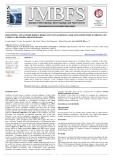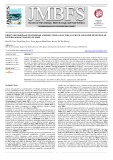
Foodborne diseases
-
Higher resistance was observed in food samples than in clinical ones. Moreover, 13 and 3 multidrug resistant serotypes of Salmonella were identified for the first time in Lebanon in the food and clinical samples respectively, with three of them isolated from imported food samples.
 5p
5p  mudbound
mudbound
 10-12-2021
10-12-2021
 9
9
 1
1
 Download
Download
-
The results showed that the RPA reaction, without requiring complex thermal cycles, was well-performed in the optimal conditions of 39°C within only 25 minutes. The limit of detection was identified as 310 fg of L. monocytogenes genomic DNA, which was 1000-fold more sensitive than the conventional PCR. RPA also succeeded to directly detect L. monocytogenes cells at a concentration as low as 2.5 × 101 Colony Forming Unit (CFU)/mL in pure cultures. In addition, RPA could accurately detect L. monocytogenes at 2.5 × 102 CFU/mL in milk without sample extraction or processing.
 5p
5p  mudbound
mudbound
 10-12-2021
10-12-2021
 17
17
 2
2
 Download
Download
-
Clinical Manifestations Intestinal Disorders Food Poisoning C. perfringens, primarily type A, is the second or third most common cause of food poisoning in the United States (Chap. 122). The responsible toxin is thought to be a cytotoxin produced by 75% of strains isolated from cases of foodborne disease. The cytotoxin binds to a receptor on the small-bowel brush border and induces a calcium ion–dependent alteration in permeability. The associated loss of ions alters intracellular metabolism, resulting in cell death.
 7p
7p  colgate_colgate
colgate_colgate
 21-12-2010
21-12-2010
 68
68
 5
5
 Download
Download
CHỦ ĐỀ BẠN MUỐN TÌM















